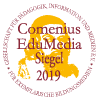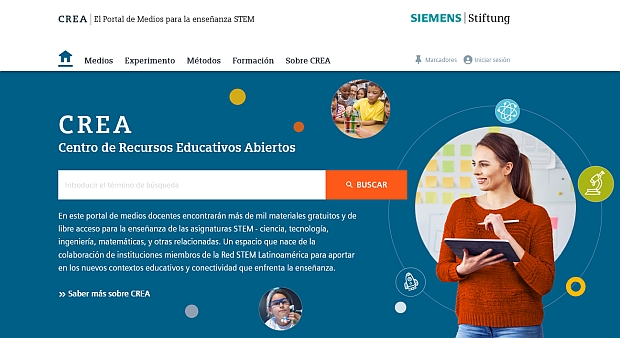Spontaneous copper plating? (without subtitles)
Video
Video (02:23 minutes, without sound):
The experiment shows how the surface of a 1-euro coin that is placed on aluminum foil in a copper sulfate solution becomes coated with the copper deposited from the solution.
Type of media:
Video (36.4 MByte)
Last update:
2018-10-26
License:

This medium is made available under a CC BY-SA 4.0 international license.
What does this mean?
How to reference this medium

This medium is made available under a CC BY-SA 4.0 international license.
What does this mean?
How to reference this medium
Media package:
Description:
All less noble metals that are immersed in the salt solution of a more noble metal dissolve and cause the deposition of the more noble metal. If you place a coin made from relatively noble alloys (brass, nickel) on very base aluminum foil, the coin's surface will become coated with copper (Cu). The object to be coated can consist of any chemically inert, conductive material or, for example, of graphite. The electrons required for the copper to deposit come from the dissolved aluminum (Al). The process is, so to speak, an internal short circuit of a Cu/Al element. The deposited copper is initially reddish and then partly oxidizes to dark copper oxides when it comes into contact with oxygen in the air.
The film is also available on the media portal as a version in which explanations are displayed as subtitles for some scenes: “Spontaneous copper plating? (with subtitles)."
Information and ideas:
The experimentation instructions for “A3 Lemon batteries and other batteries" contain two subexperiments (4 and 5) that involve copper sulfate. For safety reasons, however, some teachers may not want to allow any experiments involving copper sulfate in their classrooms. In this case, the teachers can show this video with subexperiment 5 as an alternative. This allows the overall experiment consisting of subexperiments set up as many didactic steps to be completed systematically anyway.
Detailed experimentation instructions are found in the medium “A3 Lemon batteries and other batteries (student instructions)" for subexperiment 5, which is available on the media portal.
The film is also available on the media portal as a version in which explanations are displayed as subtitles for some scenes: “Spontaneous copper plating? (with subtitles)."
Information and ideas:
The experimentation instructions for “A3 Lemon batteries and other batteries" contain two subexperiments (4 and 5) that involve copper sulfate. For safety reasons, however, some teachers may not want to allow any experiments involving copper sulfate in their classrooms. In this case, the teachers can show this video with subexperiment 5 as an alternative. This allows the overall experiment consisting of subexperiments set up as many didactic steps to be completed systematically anyway.
Detailed experimentation instructions are found in the medium “A3 Lemon batteries and other batteries (student instructions)" for subexperiment 5, which is available on the media portal.
Related media:
Learning resource type:
Experiment
Subjects:
Chemistry; Physics; Technology
Grade levels:
Grade 5 to 6; Grade 7 to 9; Grade 10 to 13
School types:
Middle/high school
Keywords:
Chemical reaction; Hydrogen; Salt
Bibliography:
Siemens Stiftung Media Portal
Author:
MediaHouse GmbH
Rights holder:
© Siemens Stiftung 2017


